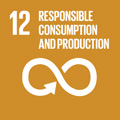- Docente: Nadia Camaioni
- Credits: 6
- SSD: CHIM/02
- Language: English
- Teaching Mode: Traditional lectures
- Campus: Bologna
- Corso: Second cycle degree programme (LM) in Photochemistry and Molecular Materials (cod. 9074)
Learning outcomes
At the of the course, the student will have the basic knowledge for studying the electronic and photonic processes involved in molecular solids, as well as some basics on organic materials and organic electronic devices.
Course contents
The course programme consists of 4 modules, in addition to an introductive overview on the objectives and advantages of organic electronics, as summarized below:
1. Overview and advantages of electronics based on organic materials
2. Conjugated organic materials
2.1. Electrical conductivity, insulators, semiconductors and conductors
2.2. Band theory and molecular orbital theory of solids
2.3. Comparison between covalent solids and molecular solids
2.4. Low molecular weight molecules and polymers: advantages and disadvantages
2.5. Charge carriers and excitons
2.6. Organic devices, injection and extraction of charge carriers
2.7. Charge carrier mobility and charge transport properties of organic solids
3. Field-effect transistors based on organic materials
3.1. Basics of MOSFET-type field-effect transistors, output characteristics and transfer characteristics
3.2. Configurations of field-effect transistors based on organic materials (OFETs)
3.3. Requirements for organic materials to be used in n-channel, p-channel and ambipolar OFETs
3.4. The role of the dielectric and of the molecular organization of the organic layer
4. Solar cells based on organic materials
4.1. Basics of solar cells, current-voltage characteristics, definition of photovoltaic parameters
4.2. Photogeneration of excitons and formation of free charge carriers in organic materials
4.3. Electron-donors and electron-acceptor materials, bulk-heterojunction structure for the active layer of organic solar cells
4.4. Requirements for electron-donor and electron-acceptor materials and role of morphology of the active layer
4.5. Some basics of dye-sensitized solar cells (DSSCs)
4.6. Some basics of perovskite solar cells
5. Light-emitting diodes based on organic materials (OLEDs)
5.1. Basics of organic light-emitting diodes, luminance-voltage and efficiency-voltage characteristics
5.2. Device structures, hole-transporting layer, electron-transporting layer, emitting layer
5.3. Formation of emitting states, fluorescent and phosphorescent emitters
5.4. Requirements for emitting materials
5.5. Thermally Activated Delayed Fluorescence (TADF)
Readings/Bibliography
Lecture notes and selected scientific papers/reviews will be provided by the person in charge of the course. In addition, two books are suggested:
- M.C. Petty, “Molecular Electronics: from principles to practice”, John Wiley & Sons Ltd., Chichester, 2007
- M. Pope & C. E. Swenberg, “Electronic processes in organic crystals and polymers”, Oxford University Press, 1999
Teaching methods
The course Organic Electronics: Materials and Applications is an optional course on the properties of conjugated organic materials and on their main applications in electronics and optoelectronics. The course consists of frontal lessons and laboratory training. The laboratory activity is aimed at demonstrating the processing techniques of organic materials, the preparation of laboratory-scale organic devices and the related characterization.
Assessment methods
The learning assessment takes the form of an oral exam of average duration of 30-40 minutes. The exam consists of three questions on three different modules of the course programme and is aimed at assessing a) the acquisition of knowledge and b) the ability of autonomous elaboration of the acquired knowledge.
Teaching tools
Personal computer, projector, Powerpoint presentations, blackboard, laboratories.
Office hours
See the website of Nadia Camaioni
SDGs



This teaching activity contributes to the achievement of the Sustainable Development Goals of the UN 2030 Agenda.
